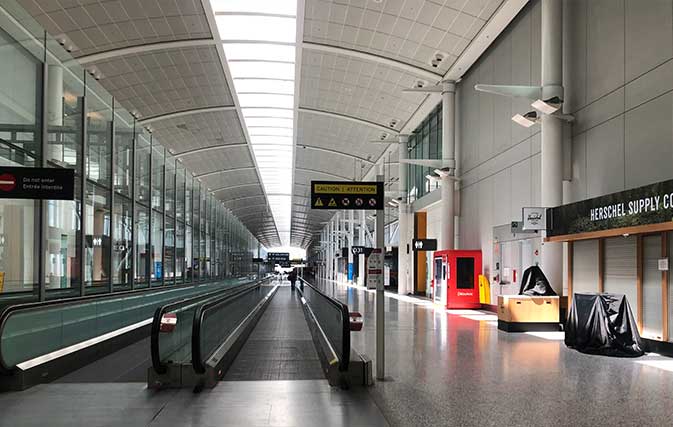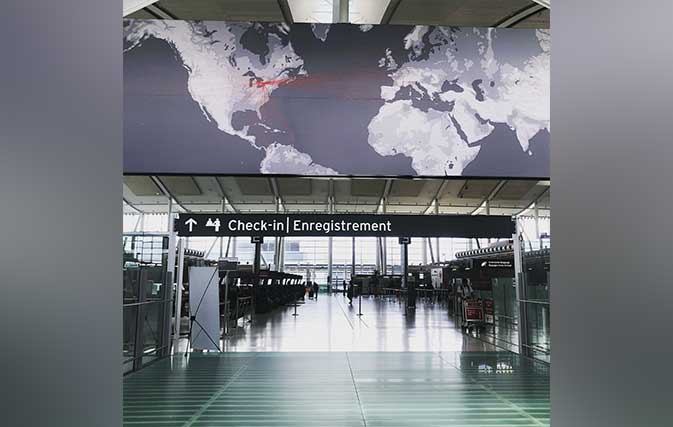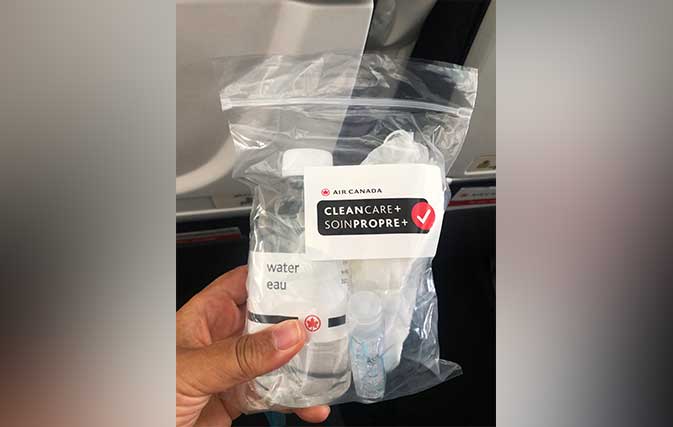TORONTO — Arriving at Pearson International Airport is not like it used to be. Cars and limousines aren’t jockeying for position, and wait times are non-existent. With minimal international, transborder and domestic flights, Canada’s busiest airport, awarded Best Large Airport in North America by the Airports Council International World in early March, is now virtually empty.
In June 2019, Toronto Pearson had 130,000 passengers pass through its doors. Post-pandemic, in June 2020, that number has dropped to 5,000.

And while YYZ announced its ‘Healthy Airport’ program with extra health and safety measures just last week, Canada’s largest and busiest gateway has in fact been following and enforcing an ever-expanding list of protocols since the pandemic’s early days.
“Since mid-March we’ve had signs encouraging physical distancing and advising passengers about new rules,” explained Ryan White, External Communications Manager for the GTAA.
Pearson Airport became the first airport in Canada on May 31 to require all passengers wear face coverings and only passengers and employees are allowed in terminals, sidewalks and parking areas. The Healthy Airport program details pandemic best practices and the extensive measures to keep everyone safe; exceptions to the rules include minors travelling without a parent/guardian and passengers requiring assistance.

Transport Canada has mandated passengers and employees of air, rail and marine wear face coverings and is working with provincial and municipal governments to encourage the same for local and regional transit systems. Ridesharing companies Uber and Lyft require drivers and passengers wear face coverings as local taxi and limousines have also adopted the same rules.
Pearson’s entry doors are now billboards, the first of many reminders of the new rules. It’s been three months since I’ve been up in the air and in mid-June, I boarded an Air Canada flight from Toronto to Vancouver. I was curious and anxious to discover how a flight I’ve done regularly for over 20 years has changed.
Without the crowds, the process from check-in to gate is fast and efficient. Airplane and airport employees encourage distancing, offer hand sanitizer (available at stations throughout the airport) and guide passengers if they need a boarding pass or to check luggage.
Airlines are encouraging online check-in and mobile boarding passes; the online process now includes a health questionnaire, reminders that face coverings are mandatory for flying and to be aware of destination requirements. In Canada, the four Atlantic provinces (Nova Scotia, Prince Edward Island, Newfoundland & Labrador, New Brunswick) are working to create a travel bubble starting July 3, allowing unrestricted travel to residents between provinces; residents of other provinces or territories wanting to travel to these provinces, Yukon, Northwest Territories and Nunavut will be required to quarantine for 14 days after arrival.
At security, Pearson passengers undergo temperature checks. Thanks to scanners, the only thing passengers touch are security bins, sanitized after each use. In July, temperature checks will be mandatory for all Canadian air passengers; currently they’re required of passengers travelling with Air Canada and WestJet. A minimal number of stores and restaurants are currently open at Pearson; at the gate, passengers relax until welcomed by gate agents to board, the days of crowding the entrance long gone.

On Air Canada, the flight crew wear PPE, and after boarding distribute the airline’s CleanCare+ package to each passenger containing hand sanitizer, antiseptic wipes, gloves, water and a mask. Throughout the flight, water is distributed and toilet are regularly checked by crew. Passengers were reminded to not congregate during the flight, and no food can be purchased on board.
Arriving in Vancouver, floor stickers remind passengers to keep their distance when waiting at the luggage carousel – as friends and family wait in their cars. The Vancouver Airport Authority has also made changes introducing YVR TAKEcare, a health and safety campaign. Like Pearson, VAA passengers and employees must wear face coverings, access is restricted (with exceptions for those needing assistance) and TAKEcare team members are throughout the airport helping passengers navigate the new rules.
“We are seeing some traffic return – Air Canada and WestJet are both increasing flights from Vancouver,” explained Robyn McVicker VP Operations of VAA, “…like after 9-11, Covid-19 will have lasting impacts on our health and safety at YVR.” McVicker added that YVR will continue to refine processes and be adaptable as more information is known regarding coronavirus.

